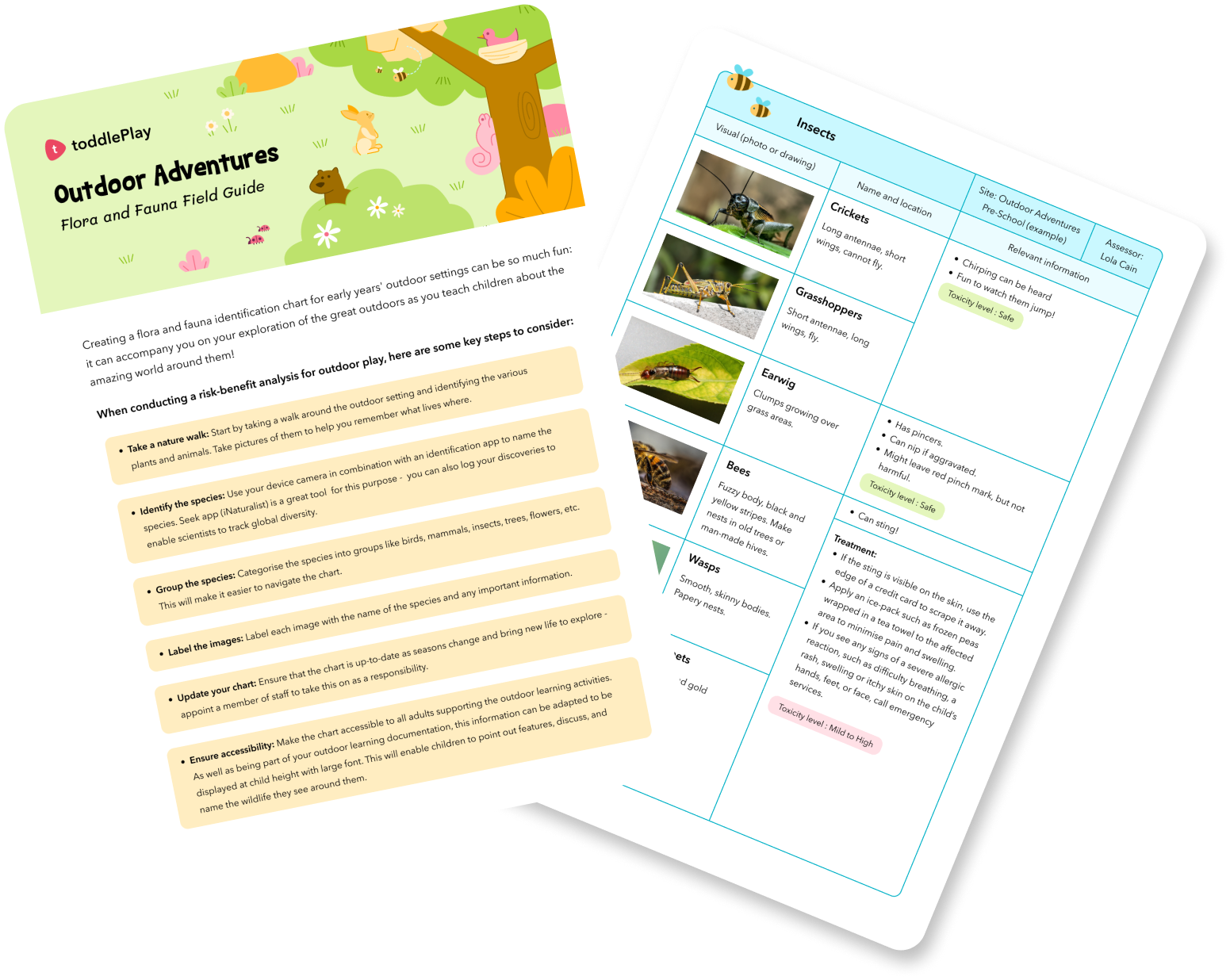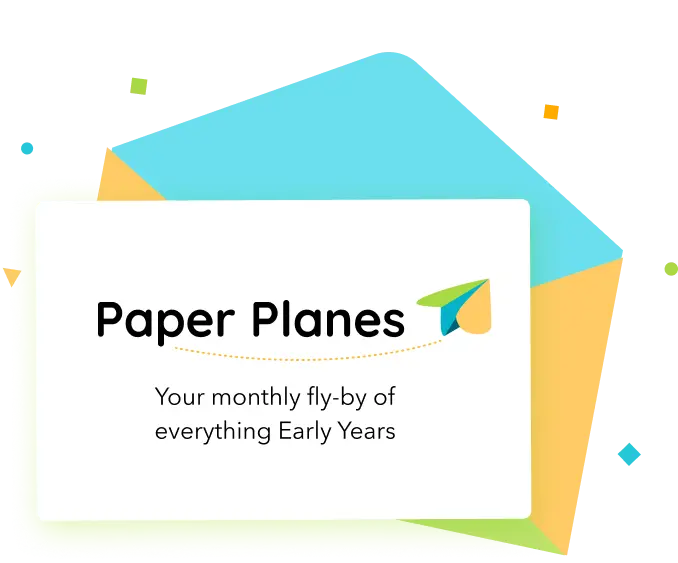A flora and fauna chart is a way of documenting living things around us. Creating one with children can be a fun way to find out who the outdoor area is being shared with, as well as a way to foster curiosity about the natural world.
What are the benefits of identifying flora and fauna?
- It encourages scientific inquiry and observation skills as participants learn to identify, categorise, and document different species of plants and animals in the area, and the relationships between them. This creates awe and wonder as the beauty of nature is discovered, enabling an appreciation of the natural world and its diversity.
- It promotes stewardship or citizenship and a sense of responsibility towards the natural world. This encourages consideration of approaches for conservation through identifying any rare or endangered species that might be present. This leads to the protection of habitats of such species and provides opportunities to consider how the area is impacted through use. It also offers an opportunity for children to develop respect for other living things and understand the fragility of nature.
- It helps to identify species that may be allergenic, poisonous, or otherwise harmful. By documenting these species, you empower participants to interact with the environment safely and prevent potential health concerns.
Identifying flora and fauna
But how do you know what’s what? What if you already struggle with the difference between a pigeon and a dove? Worry not, you are not alone!
- Identification tools: There are many tools to help with identification – field guides being the most obvious. But did you know that there are apps that can do this with you too? For example, Seek App by iNaturalist enables you to photograph any living thing – plant, animal, or insect, then identifies this for you. It also gives insights into whether the species is native or introduced, conditions for living, and other related species. It is a fun way to introduce the use of technology in the outdoor space!
- Local knowledge: Look for local groups in the area with a strong interest in conservation or birding: perhaps you live in a town that has access to park rangers. Developing relationships with these experts can provide a wealth of knowledge and understanding about the living things in your outdoor space and how to co-exist with them. Many groups have internet sites which document the living things particular to that area – you could even contribute to their research and documentation.
Overall, a flora and fauna chart is a great way to engage, interact, protect, and conserve. This evolving document is an essential component of your outdoor learning documentation, as you nurture the next generation of environmental ambassadors, and conserve your space for years to come.
Create a flora and fauna identification guide unique to your area that can be used by all participants in the outdoor space. The editable templates will show you how!
How to use this resource:
- Work with the children to identify and log the plants and animals in the space
- Use the completed resource as a field guide to inform others of what lives in this space
- Nurture environmental stewardship as you find ways to care for these living things











